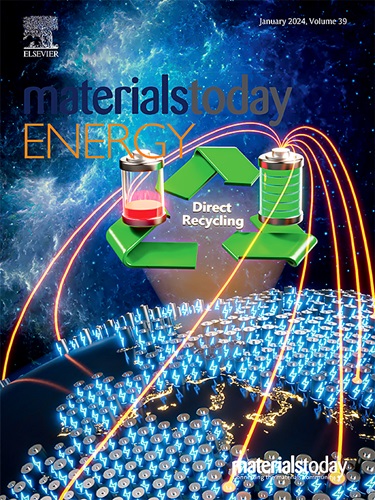One-pot in situ synthesis of ZIF particles to prepare thin-film nanocomposite membranes for CO2 separation
IF 8.6
2区 材料科学
Q1 CHEMISTRY, PHYSICAL
引用次数: 0
Abstract
Mixed matrix membranes (MMMs) are more likely to break the Robeson upper bound because they combine the pros of both organic and inorganic membranes. However, in the conventional MMM preparation processes, multi-steps are normally needed and, in many cases, the particle agglomeration and consequent non-selective voids are unavoidable, resulting in poor carbon dioxide (CO) separation performances. In addition, the agglomeration makes it challenging to fabricate thin-film nanocomposite (TFN) membranes. In this study, zeolitic imidazolate framework (ZIF)-8- and ZIF-67-based TFN membranes were fabricated via a facile one-pot in situ synthesis protocol. The ZIF particles were synthesized in the polymeric solution, then the TFN membranes were fabricated by a dip coating method. With a casting solution concentration of 1.5 %, a selective layer with a thickness of ∼300 nm can be prepared on the porous polyacrylonitrile (PAN) support. The results of thermogravimetric analysis (TGA), differential scanning calorimeter (DSC), Fourier Transform Infrared (FT-IR) spectroscopy, and X-ray diffraction (XRD) showed that ZIFs were successfully synthesized in the casting solution. At 35 °C and 2 bar, the membrane containing 5 % ZIF-67 had a CO permeance of 223.35 gas permeation unit (GPU), which was 16.55 % higher than that of pure Pebax.一锅原位合成 ZIF 颗粒,制备用于二氧化碳分离的薄膜纳米复合膜
混合基质膜(MMM)更有可能打破罗伯逊上限,因为它们结合了有机膜和无机膜的优点。然而,在传统的混合基质膜制备过程中,通常需要多个步骤,而且在许多情况下,颗粒团聚和随之而来的非选择性空隙是不可避免的,从而导致二氧化碳(CO)分离性能不佳。此外,团聚使薄膜纳米复合(TFN)膜的制造面临挑战。在本研究中,通过简单的一锅原位合成方案,制备了基于沸石咪唑酸框架(ZIF)-8 和 ZIF-67 的 TFN 膜。先在聚合物溶液中合成 ZIF 颗粒,然后采用浸涂法制备 TFN 膜。浇铸溶液浓度为 1.5 % 时,可在多孔聚丙烯腈(PAN)支架上制备出厚度为 300 nm 的选择性层。热重分析(TGA)、差示扫描量热仪(DSC)、傅立叶变换红外光谱(FT-IR)和 X 射线衍射(XRD)的结果表明,在浇铸溶液中成功合成了 ZIF。在 35 °C 和 2 bar 条件下,含 5% ZIF-67 的膜的 CO 渗透率为 223.35 气体渗透单位 (GPU),比纯 Pebax 高 16.55%。
本文章由计算机程序翻译,如有差异,请以英文原文为准。
求助全文
约1分钟内获得全文
求助全文
来源期刊

Materials Today Energy
Materials Science-Materials Science (miscellaneous)
CiteScore
15.10
自引率
7.50%
发文量
291
审稿时长
15 days
期刊介绍:
Materials Today Energy is a multi-disciplinary, rapid-publication journal focused on all aspects of materials for energy.
Materials Today Energy provides a forum for the discussion of high quality research that is helping define the inclusive, growing field of energy materials.
Part of the Materials Today family, Materials Today Energy offers authors rigorous peer review, rapid decisions, and high visibility. The editors welcome comprehensive articles, short communications and reviews on both theoretical and experimental work in relation to energy harvesting, conversion, storage and distribution, on topics including but not limited to:
-Solar energy conversion
-Hydrogen generation
-Photocatalysis
-Thermoelectric materials and devices
-Materials for nuclear energy applications
-Materials for Energy Storage
-Environment protection
-Sustainable and green materials
 求助内容:
求助内容: 应助结果提醒方式:
应助结果提醒方式:


